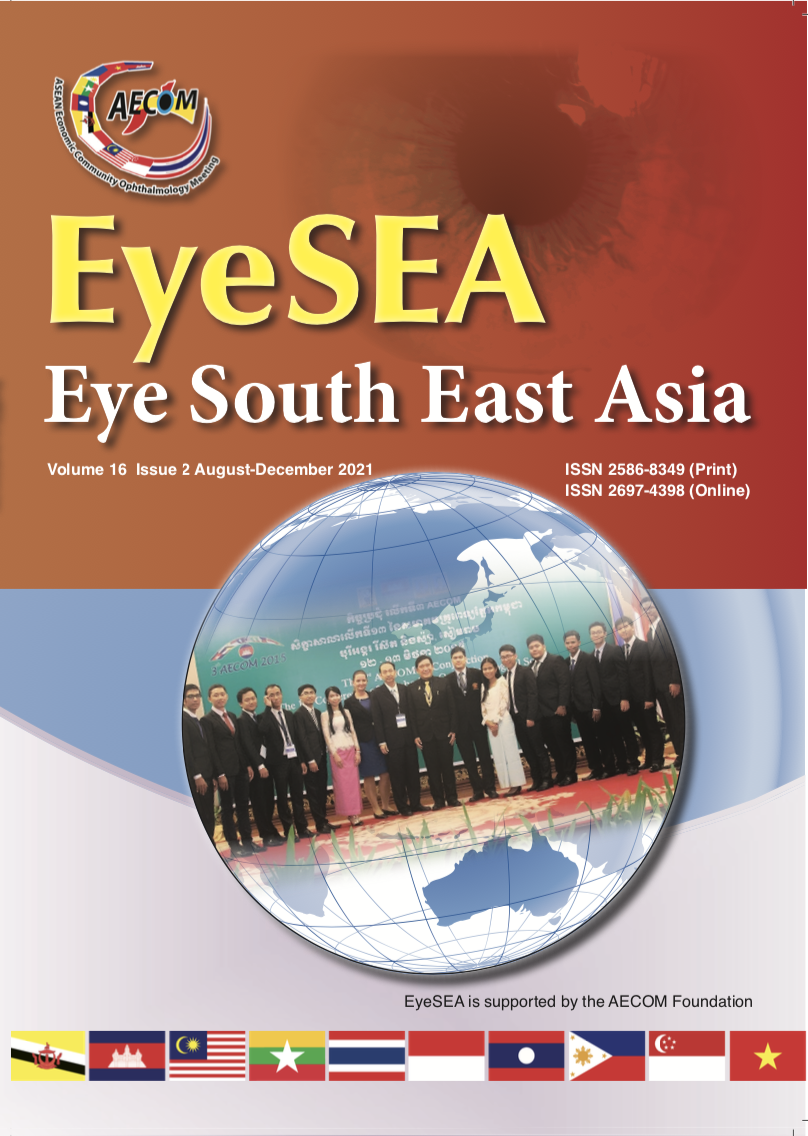Prevalence of glaucomatous blindness
Main Article Content
Abstract
Prevalence of glaucomatous blindness
KOBKARN THONGTHONG, MD
Abstract
Glaucoma is now estimated to be the second most prevalent cause of blindness worldwide after cataract and the most irreversible blindness.
Objective: To determine the prevalence, demographic and clinical characteristics of blindness in glaucoma patients.
Design: Descriptive cross-sectional study
Material & Methods: The study was performed on glaucomatous patients who received ophthalmic examination at the Ophthalmologic Outpatient Department of Angthong Hospital between October 1st, 2014 and September 30th, 2019. All glaucoma patients were examined and diagnosed by ophthalmologist. Data records were gender, age, initial intraocular pressure, duration of treatment, type of glaucoma, underlying diseases and type of treatment. Descriptive analysis was used for reporting the prevalence of glaucoma blindness. The risk factors were analyzed by Chi-square test.
Results: One-thousand one hundred and seven glaucoma patients were seen during the study period. The prevalence of glaucomatous blindness was 23.8%, which were 136 males (51.5%) and 128 female (48.5%). The prevalence of glaucomatous blindness increased with age, with the highest prevalence (35.6%) in the age range 71 to 80 years old. Open-angle glaucoma: OAG was the predominant form of glaucomatous blindness (n=143 [54.2%]), angle-closure glaucoma: ACG (n=78 [29.5%]), and secondary glaucoma (n=43 [16.3%]). Sex (P = 0.018), Age (P = 0.000), type of glaucoma (P = 0.000), hypertension (P = 0.044), diabetes mellitus (P = 0.000), dyslipidemia (P = 0.016) and cardiovascular diseases (P = 0.001) were the risk factors of glaucomatous blindness.
Conclusion: The prevalence of glaucomatous blindness is 23.8%. Glaucomatous blindness prevalence was higher in men than in women and shows typically increases with age. The main associated diseases were hypertension, diabetes mellitus, dyslipidemia and cardiovascular disease, which affect daily life activities and visions. Intensive ophthalmic examination and early glaucoma screening could pay important role in reducing glaucomatous blindness and effective treatment to save vision and improve quality of life in glaucoma patients.
Conflicts of interest: The author declares no conflicts of interest
Keywords: Glaucoma, Glaucomatous blindness


